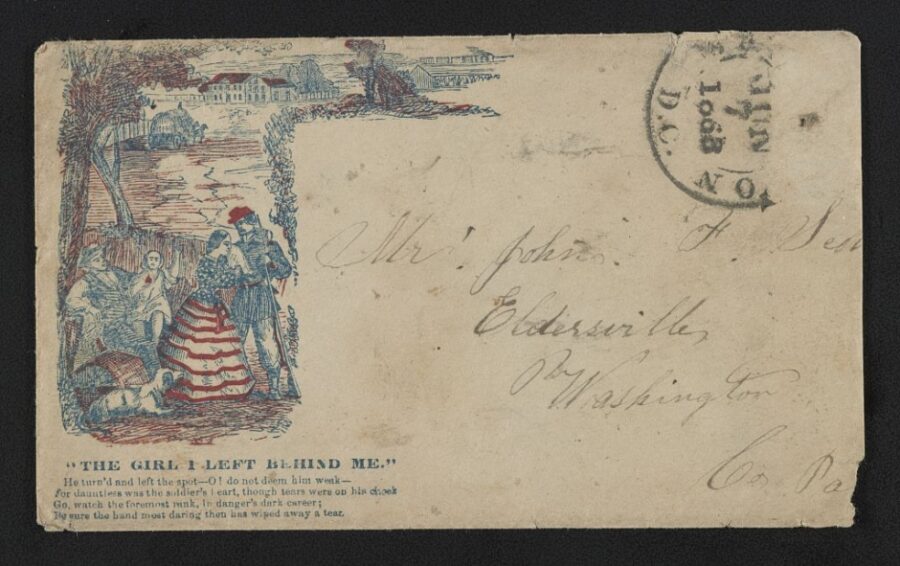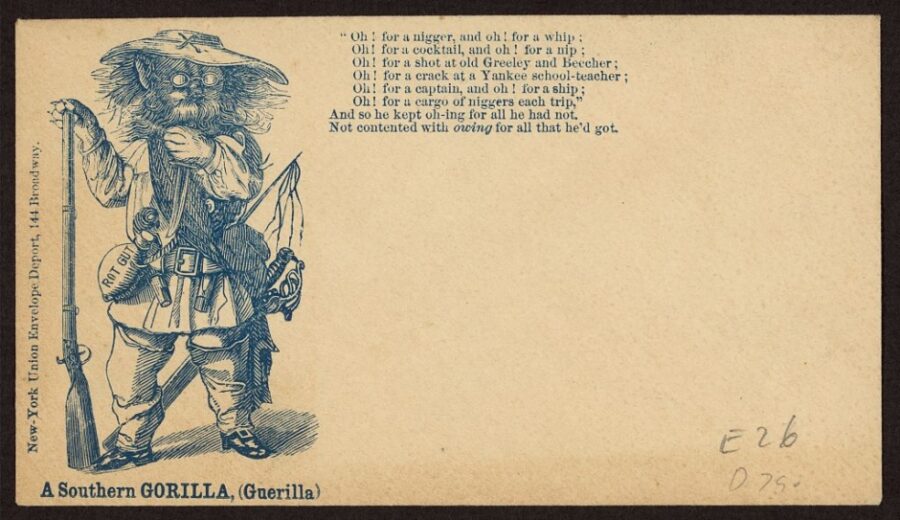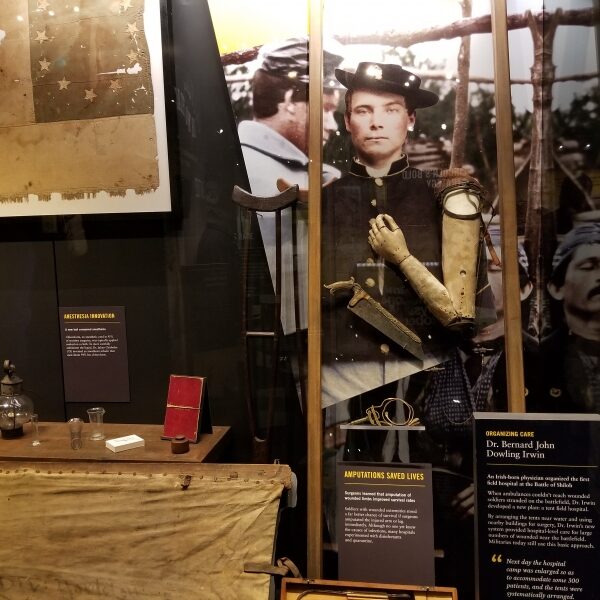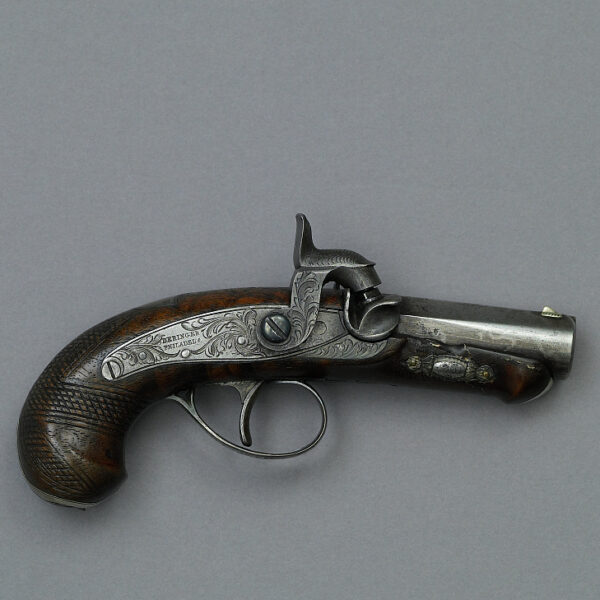For many Civil War soldiers, mail call was the highlight of the day. Handwritten letters from home served as a valuable lifeline to loved ones, maintaining morale and alleviating boredom. While the movements of the armies often disrupted delivery times, the U.S. postal service remained relatively effective—often allowing troops to send letters marked “Soldier’s Letter” for free (postage was collected from the recipient). By contrast, the Confederate Post Office Department, founded in February 1861, often faced financial difficulties that resulted in irregular mail delivery.
The envelopes that carried wartime correspondence were often elaborately decorated. Some carried likenesses of a soldier’s favorite general, others a patriotic scene or slogan. Some were humorous, others satiric. Below is a small sampling of the colorful patriotic covers that saw service during the Civil War years.

Commemorative images of prominent battles often adorned Civil War envelopes. After the fight for Fort Sumter, patriotic northerners utilized envelopes depicting the fallen U.S. bastion as a way to show support for the Union cause and pay homage to the war’s opening salvo. In this envelope, Lady Columbia rises from Fort Sumter, armed and ready for battle. (Source for this and all subsequent images: Library of Congress.)

For many northerners, the slogan “Remember Fort Sumter” was a rallying cry to recollect the war’s (original) purpose: preservation of the Union.

The portraits of prominent Union and Confederate officials frequently appeared on wartime envelopes. This particular envelope bears the likeness of Union General George B. McClellan, illustrating his popularity amongst soldiers and civilians alike.

Venerable U.S. General Winfield Scott—a popular and familiar figure who was central to the initial federal war effort—is featured on this northern envelope.

Not surprisingly, President Abraham Lincoln appeared on several northern envelopes.

Less prominent figures also found themselves featured on envelopes, as local communities and individual regiments paid homage to their own military leaders. Here, the 32nd Pennsylvania Infantry’s Horatio Gates Sickel is identified as “Our Colonel” on an envelope no doubt used regularly by the regiment’s men.

Civil War envelopes also paid tribute to the service and sacrifice of female citizens. In this image, a young woman offers a wounded soldier a drink of water as a battle rages in the distance. Such a graphic recalled the efforts of the U.S. Sanitary Commission, various orders of Catholic nuns, and the nearly 2,000 women who served as nurses in various military hospitals during the conflict.

While the drawing on this envelope depicts a sentimental farewell scene, the accompanying poem (“The Girl I Left Behind Me”) heralds the bravery and duty of the soldier, noting his “daring” and “daunting” heart.

Other wartime envelopes (such as the above example) heralded the Union cause through patriotic imagery, such as the bald eagle, the American flag, or Lady Columbia. While few examples of Confederate envelopes survived the war, they too likely bore patriotic images such as the Confederate flag, a portrait of President Jefferson Davis, or the insignia of individual southern states. Phrases such as “Don’t Tread on Us” were also common, rallying Confederates behind the cause of states’ rights.

References to the national flage were prominent in both illustrative and literary forms. Wartime envelopes, like the one above, incorporated phrases such as “The Star Spangled Banner Must Be Upheld,” “Shoot the first man that attempts to pull down the American flag,” or “The Red, White, and Blue.”

In addition to patriotic images and text, Union wartime envelopes often included references to the northern states, or, in the case of the above image, the entire United States.

Many northern envelopes utilized cartoons and caricatures to criticize southerners and the Confederate cause. Common themes included the mocking of the southern slavocracy, as illustrated in this graphic, which depicts the Confederacy as a stubborn mule trying to pull away from the Union.

The alleged backwardness of guerrilla fighters was another theme in wartime envelopes. Here, a guerrilla is depicted as a gorilla, and an accompanying poem criticizes the fighter for his grumpy, thankless, and whiny attitude. While such illustrations made light of the war and its causes, this use of satire was indicative of soldiers’ need to counter the grim realities of war with humor.

This envelope overtly caricaturizes cotton as the root evil behind the Civil War. The image of the devil sitting atop a bale of cotton and the facetious phrasing— “The Innocent Cause of all the trouble”—left no doubt that many Federals blamed “King Cotton” for sparking the conflict.

Union envelopes did not stop at equating the slavocracy with the devil; they also mocked the South’s “First Families” for defending and perpetuating the peculiar institution. This particular northern envelope satirized both the high monetary value of slaves and the cruelty they endured by referring to slaves’ shackles and chains as “jewels.”

Notably, some Civil War envelopes took a morbid turn, like the one above that called for the execution of Jefferson Davis. The overt reference to Davis as a traitor illustrated how many northerners held the Confederate president responsible for the war and wanted him singled out for punishment.

Northern envelopes also employed graphic symbolism to attack the Confederacy. Images, such as the bald eagle slaughtering a serpent shown here, were common and conveyed a fervent sense of Union patriotism.

Similarly, this illustration of the Confederate flag’s destruction would have inspired Union patriotism and exemplified their anger toward the “rebels.” It is very likely that southerners utilized metaphorical images to “attack” the Union on their envelopes as well.




